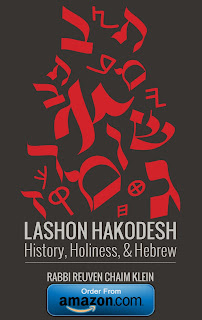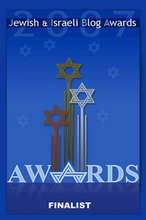WARNING: SOME OF THE PARENTHESES AND BRACKETS IN THIS POST MIGHT BE MISPLACED OR OFFSET BECAUSE MIGRATING FROM ENGLISH TO HEBREW AND VICE VERSA IS NOT DONE EASILY WITH BLOGGER.
Although I actually finished the tractate Bava Basra a few months ago, I just made a siyum recently, along with an exegetical dissertation, on the subjects of Parshas Balak and Parshas Pinchas. Below are my notes from the drasha (let's see if it fits the rules of drash):
דרוש לפ' בלק-פינחס\סיום עמ"ס ב"ב
י"ד תמוז תשס"ז (ש"ק בסעודת שלישית)
לע"נ ר' ראובן חיים בן ר' מרדכי קליין ז"ל
איתא במתני' בפרק בתרא דב"ב (קעב.) דאם היו שני אנשים ששמם אחד בעיר אחת (דהיינו ב' שמעון בן יוסף) הם צריכים לכתוב על שטרות שלהם ג' דורות ולא רק פב"פ דאל"כ אינו מוכח מתוך הכתב למי כוון השטרות. ואם הג' דורות שלהם ג"כ היו שווים הם צריכים לכתוב סימן על השטרות לידע על מי דבר השטרות (פרש"י—דהיינו אם היה גוץ או לבן או ארוך או שחור וכו'). ורק אם היו גם הסימנים שווים אז יכתבו אם היה כהן או לוי או ישראל וכו'.
[אגב, מכאן דייק אביו של זקן זקני הרב הגדול רבי ראובן חיים קליין זצ"ל (שנות חיים על רבינו ירוחם נתיב ב' ח"ג סוף אות ל') דבימות חז"ל לא קראו כהן לעלות אל התורה בשם "פב"פ הכהן" אלא סתם "פב"פ" ורק הוסיפו התאור הכהן אם היה יחוסו שוה לאיש אחר לג' דורות דומה לשטרות. וזהו ראי' לדברי הבעה"מ בהמאור הקטן (מגילה יד: בדפי הרי"ף) שכתב שבימות חז"ל לא קראו "פב"פ הכהן" כדמוכח מכתובות (כה:) גבי מעשה שבא לפני ר' אמי והוא החזיק אחד בכהונה מפני שאחריו היו קוארים לוי לתורה ומוכח שהוא כהן. וכתב הרז"ה דאם היו קוראים לכהן "פב"פ הכהן" הו"ל להוכיח מהא דקראו כן שהוא כהן אע"כ שלא עשו כן ולכן הוכיח שאותו איש היה כהן מהא דקראו לוי אחריו.]
וק"ל דאם הסימון קודם ל"כהן" בהזכרת השמות אמאי אמרינן בריש פ' פינחס "פינחס בן אלעזר בן אהרן הכהן" וכי תעלה על דעתך שהיה שם איש אחר ששמו "פינחס בן אלעזר בן אהרן" שמעשיו היו שווים למעשה דפינחס הגדול שבסוף פ' בלק? ולמה הושלשו דורותיו וגם כתב שהיה כהן?
ונ"ל דגם הזוהר הקדוש חש לקשיא זו. ולכן כתוב בזוה"ק בריש פ' פינחס דבשעה שהרג פינחס את זמרי בן סלוא נתקבצו עליו כל שבט שמעון ובקשו להרגו. ובאותו שעה פרחה נשמתו של פינחס ונכנסו בו הנשמות של נדב ואביהוא אחי אביו שמתו. ולכן קראו התורה "פינחס בן אלעזר" דהיינו שמו וגם "בן אהרן הכהן" כדי לרמוז לנו שנכנסו בגופו הנשמות של נדב ואביהוא בני אהרן. [ע' ש"ך עה"ת שביאר דאע"פ דקי"ל דאין ב' נשמות נכנסים לגוף אחד הכא נחשבו נדב חצי איש ואביהוא חצי איש מפני שלא נשאו נשים.]
ונ"ל עוד תירוץ בזה דהא דכתוב התורה יחוסו של פינחס לג' דורות אפשר לפרש ע"פ דברי חז"ל בב"ב (נט.). שם נחלקו נחלקו אם יכול אדם לעכב שכנו לסמוך צינור המקלח מים באיזה ציור ר' אושעיא אמר מעכב ר' חמא אמר אינו מעכב ור' ביסא אמר מעכב. וכתב הגמ' שם דע"ז כתב שלמה המע"ה (ע' ב"ב טו.) והחוט המשולש לא במהרה ינתק. וביארו בתוס' ד"ה והחוט (ע"פ התו"ח שם) דכיון שהיו ג' דורות של תלמידי חכמים לא ימוש התורה כ"כ מהר מאותו משפחה. וזהו מה שהביא התורה ג' דורות של תורת יחוס של פינחס. ונראה דיסוד זה נובע מהא דאמרינן (ריש פ"ג דב"ב) דחזקת הבתים ג"ש. דהיינו כדי להחזיק על איזה דבר צריך ג'. ולכן כאן צריך ג' דורות להחזיק על אותו משפחה. [וכן מצינו גבי מצרי ואדומי דרק דור שלישי אחר הגרות הם יבאו בקהל ה'.]
באמת כתב רש"י בריש פ' פינחס דהיו השבטים מבזים פינחס משום שהוא מיוחס ל"פוטיאל" שהיה מפטם עגלים לע"ז והוא הרג נשיא בישראל. וכתב רש"י דלכן הביא התורה כל תורת יוחסין של פינחס כדי לייחסו עד אהרן הכהן לומר שכשם שהיו אהרן ובנו אלעזר צדיקים וראוים לכהונה כך היה פינחס כמוהם ולכן כתיב לאח"כ לכן אמור הנני נותן לו את בריתי שלום ודרשו חז"K דהיינו שזכה פינחס שיהיו הכה"ג ממנו. אך עדיין קשה דמ"מ פינחס היה מזרע פוטיאל דכ' ואלעזר בן אהרן לקח לו מבנות פוטיאל לו לאשה והוא פיטם עגלים לע"ז? איתא בב"ב (קט:) שפוטיאל הוא יתרו שהיה מפטם עגלים לע"ז ועוד פוטיאל הוא יוסף הצדיק שפטפט ביצרו. ועוד איתא בילקו"ש רמז קס"ט דיתרו נקרא פוטיאל ע"ש שנפטר מע"ז. ולכן חזינן משם ששם פויטאל אינו לגנאי אלא אדרבה הוא שבח ליתרו דבתחלתו הוא היה מפטם עגלים לע"ז ואח"כ הוא הכיר הקב"ה ועזב את דרכיו הרעים. ועפ"ז יש לתרץ טענת השבטים על פינחס.
וכן חזינן להיפוך ח"ו דמי שהוחזקו משפחתו לרשעים קשה להם לשוב מרשעתם. כגון בלעם. דקי"ל בס' סדר הדורות (שנת ב"א קפ"ט) דאביו של בעור היה לבן הרשע ובעור היה אביו של בלעם ושלשתם היו רשעים גמורים! וא"כ אינו כ"כ פלא שגם בנו של בלעם היה רשע (כדאיתא במדרש מעם לועז שמות ב:טו).
ואל יחשוב בלבך שרק מי שבא מזרע גדולים הוא יהיה גדול שזהו סברת קרח. קרח ידע ע"פ רוה"ק שלעתיד יהיו מבני בניו שמואל הנביא ששקול כנגד משה ואהרן (דכ' משה ואהרן בכהניו ושמואל בקראי שמו וע' בברכות ריש פ"ה). וחישב קרח שאם יהיה מזרעו איש חשוב כזה גם הוא בעצמו איש חשוב. אבל הוא טעה דאין לאב חזקה בנכסי הבן ולא הבן בנכסי האב (כדתנן במתני' בפ"ג דב"ב). ולאח"ז חזר קרח משיטתו הכוזבת ומודה שמשה אמת ותורתו אמת (ב"ב עד.).
==דבר הלכה===
והנה עלה על דעתי הקטן שזה המקום להאריך בענין איסור דאורייתא לסתור דברי אביו (ע' קידושין לא:). דאיך חזינן בב"ב (נט.) שחלק בן על אביו ואביו על אביו[1]? וגם בכמה מקומות חזינן שתנאים חלקו על דעת אביהם שהיו תנאים כגון רבי שחלק ע"ד אביו רשב"ג בענין הבא לדון בשטר ובחזקה (ב"ב קסט: (? וכן בכמה מקומות ראינו שחלק הרשב"ם על זקנו רש"י ובפרט בפירושו עה"ת ובב"ב? וגם ר"ת שחולק על רש"י? כתב בספר כוס הישועות (ב"ב נט.) דגבי מח' ברבי אושעיא ואביו וזקנו הגמ' הזכיר ר' אושעיא בתחלה ואח"כ אביו ואח"כ אבי אביו והוא דייק מזה שהבן אמר שיטתו בתחלה ואח"כ אביו ואח"כ אבי אביו ולכן אף אחד לא חלק על אביו משום שלעולם קדם דברי הבן לדברי אביו ורק אחר שאמר הבן שיטתו חלק עליו אביו. ועפ"ז ניחא אותו הגמ' בב"ב וגם המח' דרבי ורשב"ג הנ"ל ששם נזכר שיטת רבי קודם שיטת אביו רשב"ג. אבל בהרבה מקומות אין דיוק כזה ונקט שם דברי האב קודם לדברי הבן. והא אסור לסתור דברי אביו? ציין רע"א בהגהותיו לשו"ע (יו"ד ס' ר"מ) את דברי הבאר שבע (סנהדרין קי.) שכתב דרק אסור לסתור את דברי אביו אם אמר כן בלשון סתיירה כגון "לא כדבריכם אלא וכו'" אבל אם סתם חלק מותר. עפ"ז יש ליישב הא דחזינן גבי אמוראים ותנאים שסתם אמרו דבריהם כנגד אביהם. אבל עדיין צ"ע הא דלפעמים כתבו הבעלי תוס' "אין נראה" או "ולא נהירא" בדברי רש"י זקנם.
ויש לזה ג' תירוצים: א) כתב זקנינו הט"ז (יו"ד ס' ר"מ ס"ק ג') דרק אסור לו לאדם לסתור דברי אביו בפניו אבל שלא בפניו מותר ועפ"ז תירץ הגר"א שם הא דחזינן בכמה מקומות שתנאים חולקים על אביהם משום שהם חלקו שלא בפניו. וגם אפשר ליישב עפ"ז כל הקושיות הנ"ל. ב) בספר שנות חיים להרב הגדול ראובן חיים קליין זצ"ל (נתיב א' ח"ד סוף אות י"ד) כתב דאיסור לסתור דברי אביו הוא חלק ממצוות יראת אביו. ופשוט שאין מצוות יראה נוהגת לאחר מיתת אביו של אדם ל"ע (משא"כ מצוות כבוד נוהג לעולם). ולכן אולי י"ל עפ"ד דכל הרבנים שחלקו על אביהם עשו כן רק לאח"מ אביהם אבל קודם לכן איסור גמור הוא. ג) כתב בספר שערים מצויינים בהלכה (ב"ב קה:) על הא דכתב הרשב"ם (שם) "ולא נהירא לי כלל" בדברי רש"י דקי"ל (ב"ב ריש קלא.) אין לדיין אלא מה שעיניו רואות ולכן גבי דברי תורה מותר לאדם לפסוק כנגד אביו דפסק הלכה ות"ת תלויים "כפי [מה] שדעתכם נוטה" (ז"ל הרשב"ם שם קלא. ד"ה ואל).


 orcid.org/0000-0001-9317-3282
orcid.org/0000-0001-9317-3282
